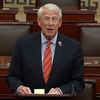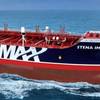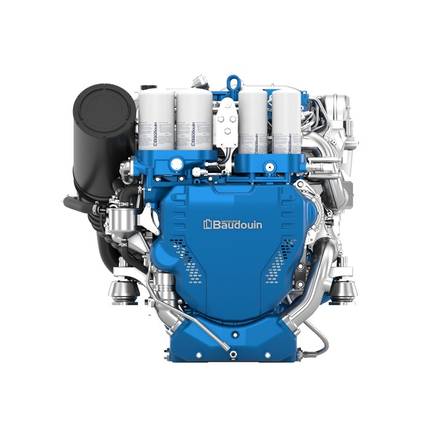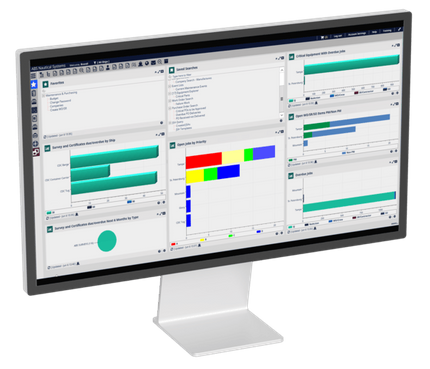1819- Congress authorized the revenue cutters to protect merchant vessels of United States against piracy and to seize vessels engaged in slave trade. The cutters Louisiana andAlabama were built shortly thereafter to assist in the government's efforts against piracy.
1837- An Act of Congress (5 Stat. L., 181, 185) laid down certain restrictions, by providing that the construction of the large number of new lighthouses, lightships, etc., for which this law was appropriating the necessary funds, would not be begun until examined by Board of Navy Commissioners. They reported to Congress those cases where the "navigation is so inconsiderable as not to justify the proposed works." The Navy detailed 22 officers to this duty and, before the end of the year, their recommendations resulted in the deferment of the construction of 31 lighthouses already appropriated for.
1839- Congress directed that Revenue Captain Ezekial Jones, commanding the revenue cutterWashington in the Seminole War, be allowed the same pay as a lieutenant in the Navy would receive for like services.
1845- Congress authorized the President to appoint six engineers (later amplified by Act of February 4, 1863) and six assistant engineers, one of each to be assigned to each revenue steamer then in the service. Engineers were to receive the same pay as first lieutenants and assistant engineers the same pay as third lieutenants.
1845- Congress directed no person be appointed as a revenue cutter officer "who does not adduce competent proof of proficiency and skill in navigation and seamanship." This was the first official underway qualifications established for the service.
1845- The duties of the Fifth Auditor of the Treasury as Superintendent of Lights was first put on a statutory basis by an Act of Congress (5 Stat. L., 752. 762), which prescribed that "the Fifth Auditor of the Treasury, shall continue to superintend the several matters and things connected with the light-houses, beacons, buoys, and public piers, as heretofore, of the United States, and to perform all the duties connected therewith, under the direction of the Secretary of the Treasury, until otherwise ordered by law."
1847- Congress appropriated $5000 "for furnishing lighthouses on the Atlantic Coast with means of rendering assistance to shipwrecked mariners." This was the first federal appropriation for rendering assistance to the shipwrecked from shore.
1849- Office of Commissioner of Customs was created. The local Collectors took over control of the revenue cutters within their jurisdictions.
1859- An Act of Congress (11 Stat. L., 423, 424) authorized the Lighthouse Board to use its own discretion in the discontinuance as necessary of such lighthouses as might become useless by reason of changes in commerce, alteration in channels, or other causes.
1873- Signal Corps of Army established a storm signal service for benefit of seafaring men, at several life-saving stations and constructed telegraph lines as a means of communication between the stations.
1875- Secretary of the Treasury was authorized by Congress to acquire by donation or purchase the right to use and acquire sites for life saving and life boat stations.
1885- Congress authorized Secretary of the Treasury to detail officers and men of Revenue Marine Service to duty under the commissioner of Fish and Fisheries Division of the Bureau of Fisheries when they could be spared for such duty.
1899- An Act of Congress (30 Stat. L., 1121, 1152) required that, whenever a vessel, raft, or other craft was wrecked and sunk in a navigable channel, it became the duty of the owner to immediately mark the sunken craft with a suitable buoy or beacon during the day and a lighted lantern at night. Previously, the Lighthouse Establishment had been authorized by Congress to place, when considered necessary, a lightship or other suitable warning of danger on any wreck or temporary obstruction to the entrance of any harbor or in the channel of any bay or sound.
1905- Congress authorized the Secretary of the Treasury to acquire a suitable site in the state of Maryland upon which to establish a depot for the Revenue Cutter Service; this station eventually became the Coast Guard Yard.
1915- An Act of Congress (38 Stat. L., 926, 928) provided for cooperation between the Lighthouse Service and the Forest Service in the management of the forest land on lighthouse reservations.
1918- By Act of Congress (38 Stat. L., 928), the protection afforded the aids to navigation maintained by the United States government was extended to those established and operated by private individuals.
1947- The SS Oakey S. Alexander reported being in distress 22 miles east of Portland, Maine, with a hatch stove in and shipping water. The Coast Guard cutter Cowslip immediately proceeded on orders from Portland to assist. When she began breaking up, the ship's commanding officer decided to beach at Cape Elizabeth. The cutter Cowslip arrived on the scene, but was unable to approach the beached vessel because of heavy seas. All 32 crewmembers, however, were removed safely from the ship by Coast Guardsmen from the Cape Elizabeth Light and Lifeboat Station using a breeches buoy.
(Source: USCG Historian’s Office)













